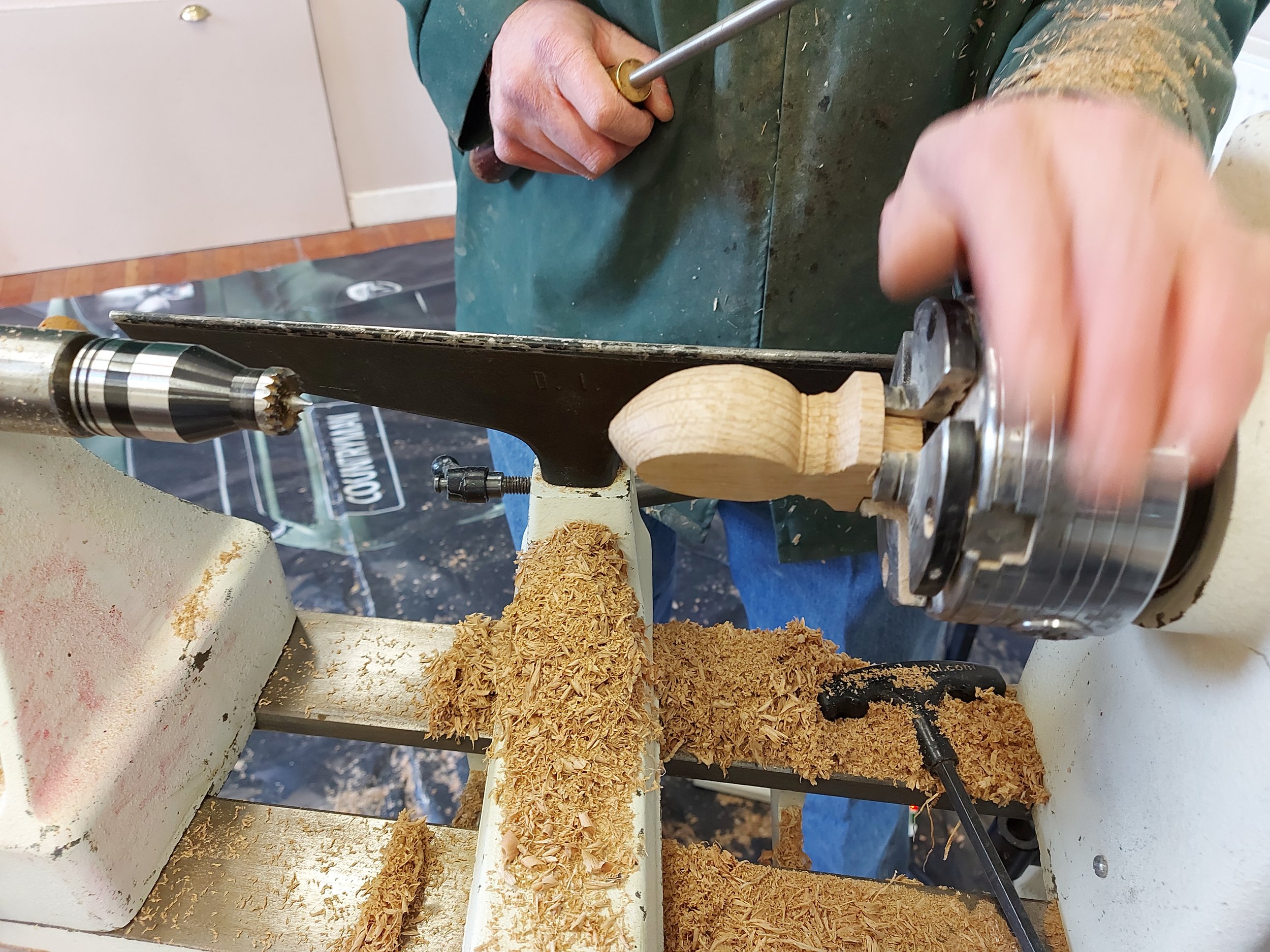Southeast - April 2022
Held a week earlier than normal due to Easter, our April workshop was reasonably well attended on a bright, sunny but chilly day. Our featured demonstrator, Tom Larkin, was quite topical in his choice of subject focusing on getting value out of even the smallest scraps of waste wood from other projects including oak, spalted beech, iroko and even birch ply, producing a meringue of tiny animals all executed with high precision craftmanship using not only conventional woodturning tools but also texturing techniques using a blow torch, drilling and shaping very small parts using an assortment of Dremel bits, his pyrography pen, a homemade punch to shape little felt ears, bristles from the sweeping brush to create whiskers and even a pipe cleaner or two as tails.
Using a 45 m.m. squared section X 70 m.m. long of Birch ply, a cut off from an old rocking horse project, held in the chuck Tom fashioned a cone shaped body for what was to be a cat, a Kilkenny one I believe, creating a tenon on the end accurately sized using a home made jig to hold the head. A very brief sanding with a succession of grits from 120 to 240 Tom brough the piece to a high finish using cellulous sealer and cleanly parted it off with a few deft movements of his parting tool. The head was next, again using the Birch ply shaped almost oval to create a large smiley appearance, finished in the same way as the body except before parting off Tom used his Dremel with an assortment of drill bit sizes to make holes for the nose, eyes and ears, for which two small flats were sanded prior to drilling. The miniscule nose was made with Iroko for contrast with a tiny 1 m.m. hole drilled through the spigot to hold the whiskers, (4 pieces of bristle taken from the sweeping brush), while the ears were made from a piece of Iroko turned to cone shape, then cut in half with a thin bladed saw, glued in place initially with superglue but later dowelled with a piece of a cocktail stick as clearly seen in the photo. Tiny glass eyes purchased on line from a craft supplies company were then inserted into the predrilled holes. One pussycat complete.
Every cat needs a mouse to chase and catch. Tom mounted apiece of spalted beech about 40 m.m. square by 75 m.m. long in the chuck, and quickly brought to cone shape, and after a light sanding and finishing with sanding sealer, parted off. Tom had prepared a sanding disc which he mounted in the chuck and sanded a flat on the cone, a black felt tip pen supplied the nose and his pyrography pen, the eyes. Using the Dremel, he drilled holes for the two ears and tail which was another pipe cleaner. Tom had modified a section of metal piping to make a punch to produce two small ears from a sheet of felt with little tabs which were inserted into the holes previously drilled and hey presto, the cat had prey.
The last figurine was a hedgehog and after a brief biology lesson on how hedgehogs normally have their spines folded when relaxed and only erect when in defensive mode, Tom chose a piece of Oak, again about 45 m.m. square by 80 m.m. long. This he mounted between centres, off set by 5 or 6 m.m. so that when rounded down, a flat was automatically produced on one side. This was to be the base of the finished item. He then turned a flange close to the chuck before parting off, remounting the wood on this flange, thus bringing it to true centre, before bringing the unsupported end to a point. Tom then scorched the wood with a blow lamp and used a wire brush in longitudinal strokes to both remove loose ash and add texture. Finally, Tom turned off the blackened surface as per photo to create a face, added a nose with his felt tip and eyes with the pyrography pen sealing the finished item with sanding sealer. The menagerie complete. Well done, Tom, and thanks.
















